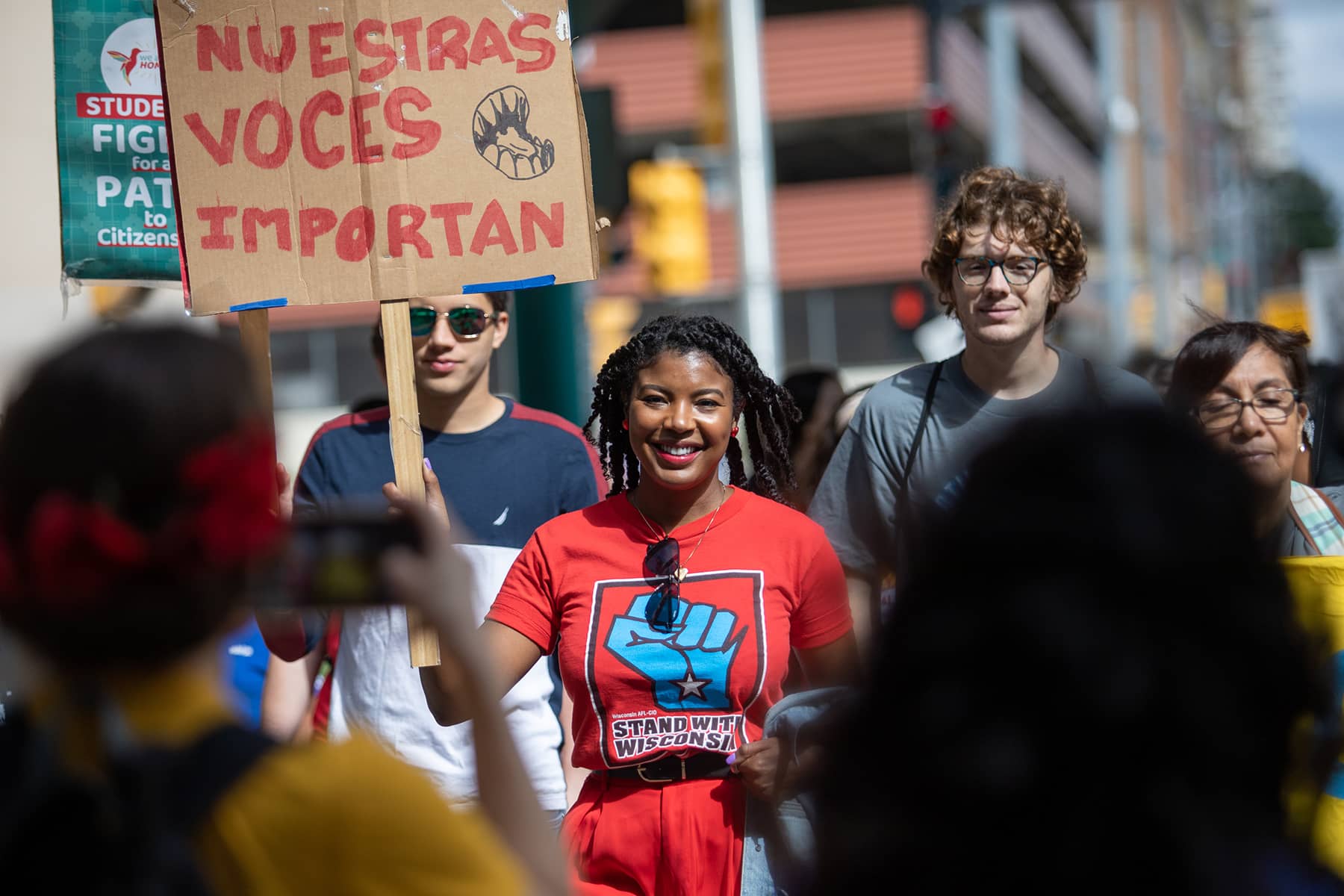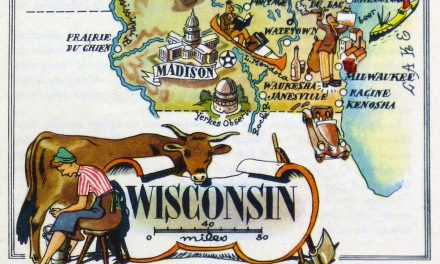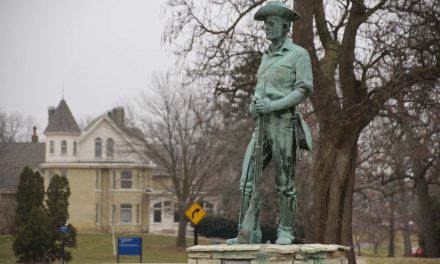
Unemployment is down, wages are up and Wisconsin workers are more willing to talk union this Labor Day. That is the summary of the newest State of Working Wisconsin report from COWS, a University of Wisconsin research center that looks at the state of the economy through the eyes of the broad workforce.
“The question we’re always trying to track is what is the relative balance of power between employers and workers,” said Laura Dresser, associate director at COWS and lead author of the report. “This is a moment when I see more consistent signs of increased power for workers.”
In search of better working conditions, whether by moving to a new employer or staying and demanding a better deal, “workers see opportunities and are taking those opportunities in individual and collective ways,” Dresser said.
That does not mean the state has become a workers’ paradise by any means, the report found.
“To be sure, deep underlying problems — job quality in low-wage jobs, severe racial inequality, and long-term union decline — are still with us and the gains of this year could easily be lost if we move into recession,” the report stated. “But this year, workers have seized opportunities to improve their working conditions. If formal and informal worker organizing continues, Wisconsin may begin to see a longer-term shift.”
Wisconsin residents of working age are more likely to be working or seeking work than the national average, as measured by the state’s labor force participation rate: 66.4% in July, vs. 62% for the U.S. as a whole. Wisconsin’s unemployment rate, measuring the number actively seeking work but unable to find it, was 3% in July, a lower rate than the nation’s 3.5%.
Still, among Black and Hispanic workers unemployment rates remain higher. The same is true in rural northern counties, where the economic base has continued to deteriorate with the loss of farms and other work opportunities.
At the same time, employers won’t find it any easier to fill jobs in the years ahead. Demographics in the form of an aging population and a shrinking share of people 25 to 54 years old, the “prime working age” range, are making the work force smaller, the report observes. That will continue, “leaving public and private employers fighting over the smaller pool of potential workers.”
The report soundly rejects one persistent trope in discussions of the current workplace: The title of one chapter is “The Great Resignation Myth.”
That conventional catchphrase “mischaracterized” what has been happening as employers struggle to fill job openings, the report stated. “It is more appropriate to think of it as a ‘great renegotiation’ or ‘great reallocation.’”
Hiring outpaces quitting throughout the economy. “Workers aren’t moving out of work, they’re moving up,” the report stated. Total employment in Wisconsin clocked in at more than 3.05 million in May 2022 — belying the idea that there’s a huge reserve of people who have simply opted out of work.
But job growth varies widely. Leisure and hospitality jobs, which saw the most drastic decline early in the COVID-19 pandemic, have recovered dramatically, but they still remain 6% below their pre-pandemic number, the report finds. Compared with February 2020, jobs in a collection of other services are down 6.8%, as well as in government (5.6%) and education and health care (3.7%). The biggest gains have been in construction, up 4.5% compared with before the pandemic. Manufacturing is down less than 1% in that time.
Wisconsin wages have risen from 2019 through 2021 according to the report, and disparities along gender and ethnic lines have lessened slightly. For Black women the wage gains have been the strongest in that period: 14%. White women’s wages are up 9%, Hispanic women’s wages up 4.2%, Hispanic men’s wages up 5.2% and Black men’s wages up 2.9%. White men have seen a 2.3% drop in their average wages.
Overall, the impact has been to “pull up the bottom” of the working population, narrowing slightly the gaps between the highest-paid and lowest-paid tiers. “It is only lower wage sectors where this year wages are increasing faster than inflation,” Dresser said.
As employers continue to struggle to fill job openings, conditions have made it easier for “workers to see their value and to demand more from work,” Dresser said. “The power of a strong exit threat changes the game.”
They are also showing more interest in unionizing.
Union representation took a large hit in Wisconsin after 2011, with the passage of Act 10 that year severely limiting collective bargaining for most public employees and weakening their unions, followed by the state’s Right to Work law that undercut unions for private sector workers in 2015. Unions represented 20% of workers in Wisconsin in 1989; the number was fewer than 10% by 2021.
In the last few years, there have been high-profile union organizing efforts in Wisconsin from baristas at Starbucks and Colectivo Coffee to nurses at UW Health and other groups seeking union representation. Those alone won’t reverse the state’s decline in unionization, Dresser said, but they represent a change in direction.
“When workers make demands, you’re seeing employers pre-emptively offering things to keep them from making demands,” she said — and some workers see the message of their own power as a consequence. “The cycle really does reinforce itself.”
The report cites a recent Gallup poll that 71% of the U.S. population has a favorable view of unions — “as high as it’s been during the ‘60s,” Dresser observed. “There’s a kind of consciousness about corporate power and inequality that’s coming into focus, and looking at organizing unions as a way to solve that.”
Erik Gunn
Claudio Martinez
Originally published on the Wisconsin Examiner as Report finds conditions are looking up for workers in Wisconsin — including increased power
Donate: Wisconsin Examiner
Help spread Wisconsin news, relentless reporting, unheard voices, and untold stories. Make a difference with a tax-deductible contribution to the Wisconsin Examiner














